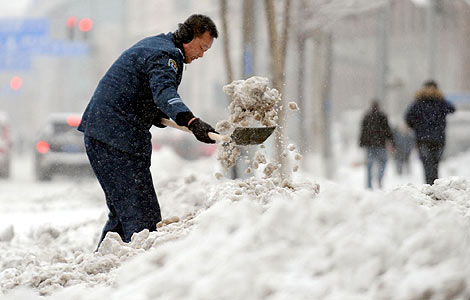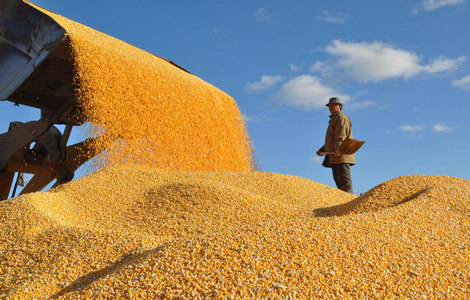
BEIJING - Households in rural China have seen incomes increase on average over the past three years, but the wealth gap in the vast countryside has almost reached the warning level, a top Chinese institute for rural studies said Tuesday.
The cash income of rural households grew 14.13 percent from a year earlier to an average of 38,894.4 yuan (6125 U.S. dollars) last year, and the per capita cash income in rural areas rose 11.95 percent to 9,260.6 yuan, according to a survey by Central China Normal University's Center for China Rural Studies.
The survey was launched in 2009 and covered more than 6,000 rural households across the country. The figures have not been adjusted to reflect inflation.
Leaders put rural issues high up the agenda, where resident certificates of most people are registered in rural areas under a system that classifies 1.3 billion people into two groups, farmers and non-farmers.
The institute said in a report released Tuesday that the income growth was fueled by rising wages among farmers who have abandoned rural life to work as migrant laborers outside of their hometowns, mostly in cities.
Wages paid to the migrant laborers accounted for 65.7 percent of the total income of rural households, it said.
China is experiencing the largest mass migration of people from the countryside to urban regions in history. The nation had 253 million migrant workers by the end of 2011, 10.55 million more than a year earlier, according to official data.
The wealth gap among rural households is widening. The Gini coefficient, an index reflecting the rich-poor gap, in rural China stood at 0.3949 last year, nearing the warning level of 0.4 set by the United Nations, the institute said.
It also said that the total income of the top 20 percent of the rural households was 10.19 times that of the bottom 20 percent and that the wealth gap in west China was bigger than in the east of the country.
"We believe the wealth gap in the nation as a whole is well above 0.4 because the the gap is large between urban and rural areas," Deng told Xinhua. "But as an institute for rural studies, we don't have urban figures."
The Gini index, which measures income distribution on a scale of zero to one, indicates a relatively reasonable income gap if the number is between 0.3 and 0.4. A Gini index between 0.4 and 0.5 signals a large income gap.
The last time the Chinese government published a Gini index for the nation was in 2000 when it stood at 0.412. But most scholars believe the index is currently between 0.45 and 0.50.
Deng Dacai, professor and deputy chief of the institute, said the Gini index has been on the rise from 0.29 in the early 1980s when the nation started to implement the reform and opening-up policy.
"We should be on the alert for further rises in the index. On the other hand, we need a rational view about the gap, which encourages people to become rich by hard work if the divide is reasonable."
The reason why the gap exists is that those who work as migrant laborers in more urban areas earn twice as much as those who grow crops to make a living, the institute said. Only 11.1 percent of the richest and 82.5 percent of the poorest live by farming.
The income gap between the two groups shows how large the gap is between urban and rural areas, said Xu Yong, chief of the institute, adding that it will force more rural residents to abandon farming and leave the countryside.
"As a result, the cities will likely face more pressure and problems will emerge in the country's agricultural production," he warned.







